Barrett MRAD SMR .338 Lapua Bolt Action Rifle Fixed Stock 26" Barrel, Tungsten Gray – 18504 For Sale
$4,385.99
The Barrett MRAD SMR .338 Lapua Bolt Action Rifle is a highly specialized firearm, crafted for precision and reliability in a single-caliber format, distinct from its multi-caliber counterpart, the standard MRAD. Dubbed “Single Mission Rifle,” the SMR is optimized for consistent performance with its dedicated caliber, featuring a free-floating barrel securely fitted with a standard barrel nut to enhance accuracy. It sports a fixed stock with an adjustable cheek piece for shooter comfort and separate spacers to accommodate varying lengths of pull. With a 26-inch precision barrel, tungsten gray finish, and weighing nearly 2½ lbs less than the standard model, the SMR offers improved agility and reduced weight without compromising performance. This makes it an excellent choice for precision shooters demanding a robust, meticulously designed rifle for high-caliber, single-mission tasks.
What is MRAD smr?
MRAD SMR refers to the Military RADiation Safety Monitoring Report (SMR), which is a document or report used within military contexts to monitor and assess safety conditions related to radiation exposure. This report typically includes data on radiation levels, exposure times, and safety measures in place to protect personnel and equipment from harmful radiation effects. If you are looking for more specific information or a different context, please provide additional details.
Can civilians buy Barrett-Mrad?
Yes, civilians can buy the Barrett MRAD (Multi-Role Adaptive Design) rifle in the United States, provided they comply with federal, state, and local regulations regarding firearm purchases. This usually includes passing background checks and ensuring that the rifle is legal in their jurisdiction, as laws can vary. It’s important for individuals to confirm these regulations and restrictions before purchasing such firearms.
What is the difference between the MRAD and the m98?
The MRAD (Multi-Role Adaptive Design) and the M98 are both sniper rifles, but they have different designs and features tailored to specific needs:
1. **MRAD (Barrett)**:
– The MRAD is a modular sniper rifle created by Barrett.
– It features a highly adaptable design with a user-changeable barrel system, allowing quick caliber conversions.
– The rifle is known for its precision, durability, and versatility, catering to various military and law enforcement requirements.
– It can be configured in multiple calibers, including .338 Lapua Magnum, .300 Winchester Magnum, 7.62 NATO, and others.
– The MRAD is equipped with a folding stock, adjustable length of pull, and cheek height for shooter comfort.
2. **M98 (Mauser)**:
– The M98, or Mauser 98, is a historically significant bolt-action rifle first introduced in 1898.
– It is renowned for its robust and reliable action, forming the basis for many subsequent bolt-action rifle designs.
– The M98 action has been used in military rifles, sporting rifles, and hunting rifles worldwide.
– It typically fires cartridges like the 7.92×57mm Mauser (8mm Mauser).
– The M98 has been used in various configurations over its long production history.
**Key Differences**:
– The MRAD is a modern modular rifle with advanced features, while the M98 is a classic, historically significant bolt-action rifle.
– The MRAD focuses on adaptability and precision for contemporary tactical use, whereas the M98 is valued for its historical significance and rugged reliability.
– The MRAD supports multiple calibers with quick-change barrels, whereas the M98 is generally fixed to a specific caliber based on its original design.
Does the military use the Barrett-Mrad?
Yes, the military uses the Barrett MRAD (Multi-Role Adaptive Design) sniper rifle. It has been adopted by multiple military forces, including the U.S. Special Operations Command (SOCOM), which selected it as their new Advanced Sniper Rifle in 2019.
What does SMR stand for rifle?
In the context of a rifle, SMR can stand for “Squad Marksman Rifle.”
Do US snipers use MOA or MRAD?
US snipers use both MOA (Minute of Angle) and MRAD (Milliradian) systems, depending on their training, preference, and the specific mission requirements. Both systems are effective for precision shooting, and the choice often comes down to personal preference or the type of equipment in use.
Why is 50 BMG illegal?
The legality of the .50 BMG cartridge varies by jurisdiction, and it’s not universally illegal. However, there are a few reasons why it might be restricted in certain areas:
1. **Power and Range**: The .50 BMG is a high-powered cartridge with a long effective range, capable of penetrating armor and causing significant damage. This makes it more regulated in some areas to prevent misuse or accidents.
2. **Public Safety Concerns**: Due to its potential for causing extreme injury or property damage, some jurisdictions impose restrictions to enhance public safety and prevent use in illegal activities.
3. **Specific Legislation**: Some states or countries have specific laws targeting certain types of firearms and ammunition to address crime rates or align with broader gun control efforts. The .50 BMG might fall under such laws.
Restrictions can include outright bans, limits on sales, or requirements for special licenses. For precise details, it’s recommended to consult the specific laws of the jurisdiction in question.
Is the MRAD a good rifle?
The MRAD (Multi-Role Adaptive Design) rifle, designed by Barrett, is generally well-regarded in the firearms community. It is praised for its modularity, allowing users to easily change calibers and customize it for specific roles. Users appreciate its precision, build quality, and adaptability for both military and civilian use. However, whether it is a “good” rifle can depend on specific needs and preferences, such as budget, intended use, and personal fit. Overall, it is considered a high-quality option for those seeking a versatile bolt-action rifle.
Who uses Barrett Mrad?
The Barrett MRAD (Multi-Role Adaptive Design) rifle is typically used by military and law enforcement agencies, as well as by civilian long-range shooting enthusiasts. Its modularity, precision, and adaptability make it a popular choice for these groups.
What sniper did Chris Kyle use?
Chris Kyle, a former U.S. Navy SEAL sniper, primarily used the McMillan TAC-338 sniper rifle chambered in .338 Lapua Magnum for long-range engagements. He also used the Mk 12 Special Purpose Rifle and the Barrett M82, a .50 caliber sniper rifle, during his service.
What are the advantages of MRAD?
MRAD, or Mobile Relational Algebraic Derivatives, can have various advantages, depending on the context in which they are used. However, it seems like there might be some confusion, as MRAD could also refer to different concepts, such as Measurement and Reporting Analysis Dashboard, or even something else specific to certain industries or technologies. Assuming you are referring to a hypothetical or specialized application of Mobile Relational Algebraic Derivatives, the advantages might include:
1. **Efficiency in Data Processing**: MRAD could potentially optimize the processing of relational data, making operations faster and more efficient, especially on mobile or decentralized platforms.
2. **Scalability**: If applicable to mobile environments, MRAD might offer scalable solutions for working with large datasets on-the-go, providing analytical capabilities without the need for extensive hardware resources.
3. **Real-time Analytics**: Enhanced capabilities to perform real-time data analytics on devices with limited computational power could be a key benefit.
4. **Flexibility and Adaptability**: MRAD might allow for flexible data manipulation and querying, supporting various applications and use cases in mobile technology.
5. **Interoperability**: If designed with standards in mind, MRAD systems might enhance compatibility across various software and hardware platforms.
Please provide additional context or clarify MRAD’s scope if you were referring to something more specific.
What is the best sniper rifle?
The “best” sniper rifle can vary depending on context, including military applications, law enforcement, or civilian use for hunting or sport shooting. Additionally, personal preference and specific needs play significant roles in determining the best choice. Here are a few sniper rifles that are highly regarded in various contexts:
1. **Barrett M82/M107**: Known for its long-range capabilities and powerful .50 BMG round, the Barrett is widely used by military forces.
2. **Accuracy International AWM**: Famous for its accuracy and reliability, the AWM (Arctic Warfare Magnum) is popular among military and police forces worldwide.
3. **Remington MSR (Modular Sniper Rifle)**: Known for versatility and the ability to adapt to different calibers, it’s used by special forces.
4. **CheyTac M200 Intervention**: Renowned for extreme long-range precision shooting.
5. **Sako TRG**: Offers exceptional accuracy and reliability, favored by professional snipers and sport shooters.
Ultimately, the best sniper rifle depends on the specific requirements and conditions in which it will be used.
What does MRAD stand for?
MRAD stands for Milliradian, which is a unit of angular measurement used in optics and ballistics.
How many MRAD is 100 yards?
To determine how many milliradians (mrad) correspond to 100 yards, you need to understand the conversion between yards and mrad. The angular measurement in milliradians is often used in shooting and optics for adjusting sights and scopes.
One mrad subtends approximately 3.6 inches at 100 yards. To find out how many mrads, you would calculate:
[ text{mrad} = frac{text{distance in inches}}{text{mrad subtension per 100 yards}} ]However, this requires a known target size at that distance. If you’re specifically asking for the mrad adjustment needed for 100 yards without specifying any target size, the concept of mrad isn’t directly applicable because it depends on the size of the shift or target you’re trying to measure or adjust for.
If you have a specific target size in inches that you want to calculate the mrad scope adjustment for at 100 yards, you use:
[ text{mrad} = frac{text{target size in inches}}{3.6} ]If you need the conversion for a specific scenario or further details, please provide additional information.
What is medium range air Defence MRAD?
Medium Range Air Defence (MRAD) refers to a system designed to detect, track, and intercept aerial threats such as aircraft, missiles, and potentially drones within a medium range, typically between 20 to 100 kilometers. These systems are essential for providing protection to critical assets and areas from aerial attacks, offering a layer of defense between short-range and long-range air defense systems. MRAD systems often include radar for threat detection and tracking, as well as surface-to-air missiles capable of engaging and neutralizing incoming threats.
| Product Line | MRAD SMR |
|---|---|
| Action | Bolt Action |
| Overall Length | 47.4" |
Be the first to review “Barrett MRAD SMR .338 Lapua Bolt Action Rifle Fixed Stock 26" Barrel, Tungsten Gray – 18504” Cancel reply
Related products
Barrett MRAD SMR
Barrett MRAD SMR .300 Win Mag Bolt Action Rifle Fixed Stock 26" Barrel, Black – 18511
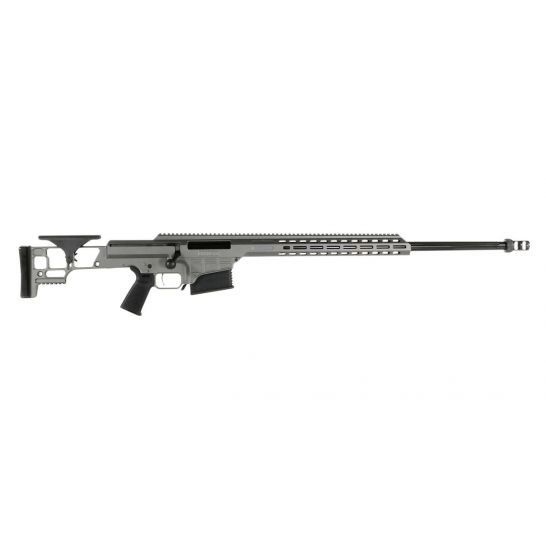
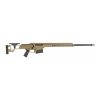
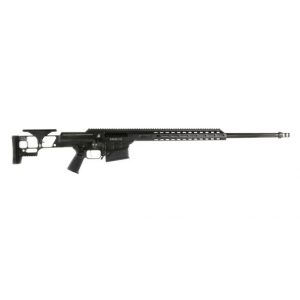
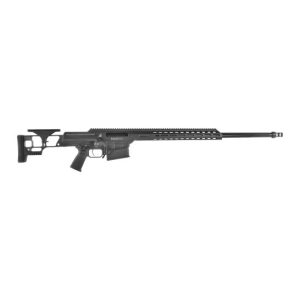
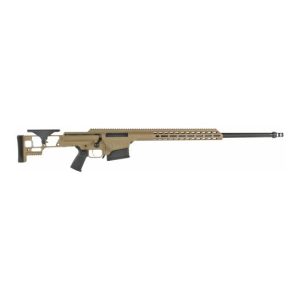
Reviews
There are no reviews yet.